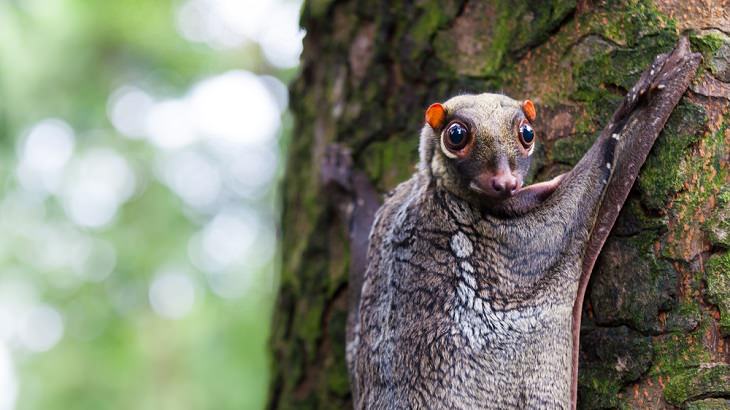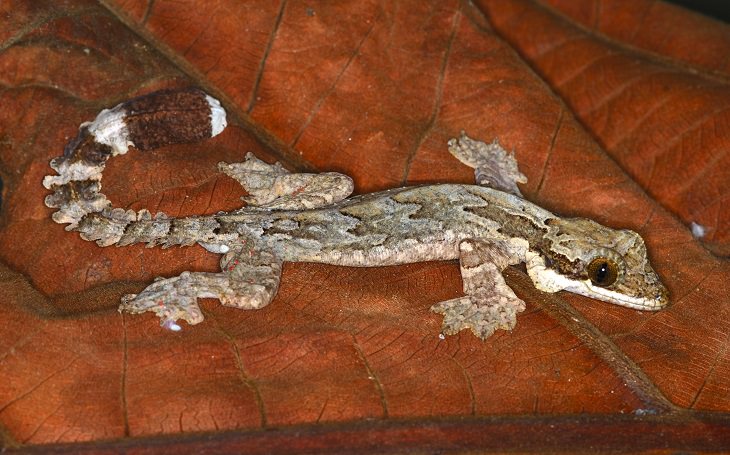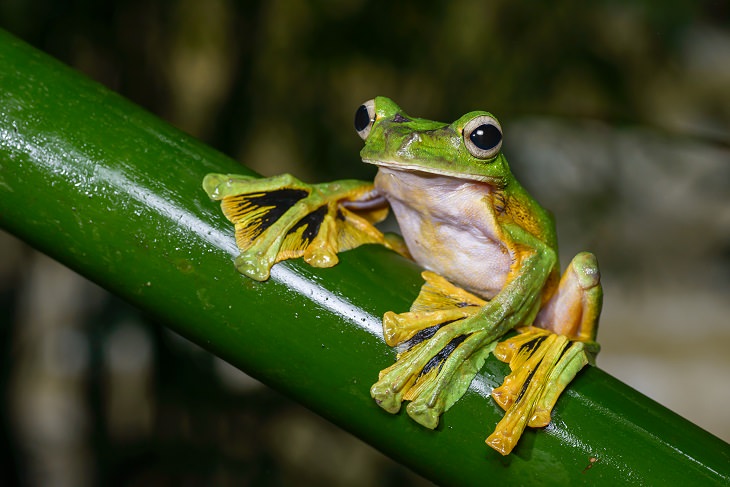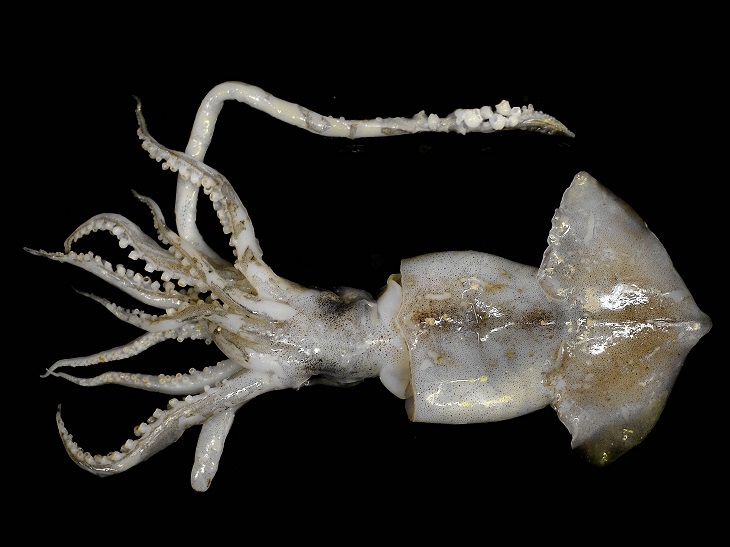When we talk of flying animals, we instantly picture birds, insects, or bats in our minds. However, a number of other creatures have evolved over time to gain the ability of flight. In fact, the animal kingdom has several other little-known members who can travel through the air and are regarded for their acrobatics. They may not be as successful as birds or insects in sustained flight, but these animals have developed unique systems to help them stay in the air, even if it might be for a brief period.
Here, we will talk about a few animals who have found ways to glide, parachute, or fly through the air. They are truly the unexpected aeronauts of the wild you probably didn’t know about.
1. Flying fish (Exocoetidae)
The name ‘Flying fish’ itself sounds weird, right? After all, how can a fish ‘fly’? But you would be surprised to know that there are more than 60 species of flying fish in the family Exocoetidae. These incredible sea-dwellers have evolved to develop long wing-like fins that enable them to leap out of the water and coast through the air. Their ability to ‘fly’ helps them evade underwater predators and, at times, these fish can leap as high as tens of meters.
Amazingly, some flying fish have shown the ability to stay in flight for at least 45 seconds and up to 650 feet (200 meters). These animals are mostly found in the Atlantic, Pacific, and Indian oceans and can survive in tropical and temperate climates.
2. Flying frog (Rhacophorus nigropalmatus)
Also known as Wallace's flying frog, parachute frogs, or the Abah River flying frog, these amphibians have long webbed toes and a skin flap between their limbs which allows them to parachute or float down from the treetops. In fact, many of them can perform some brilliant aerial maneuvers. Scientists say that the frogs developed this ability because of the enlarged toe membranes they have. These membranes act as parachutes or wings when the flying frogs spread their limbs after a jump.
Flying frogs are found in the dense tropical jungles of Malaysia and Borneo and mostly like to live in the forest canopy. However, they do come down to the ground level to mate and lay eggs. When they feel threatened or in search of prey, the frog leaps from one branch to the other and splays it four webbed feet.
Related Article: The Biggest Frog Ever: The Origins of Beelzebufo
3. Colugos (Cynocephalus volans)

Also called Flying lemurs, these small, furry tree-dwellers can’t technically fly and aren’t exactly lemurs. However, these unusual animals can glide incredible distances between trees. Colugos have a unique fur-covered membrane called a patagium that extends from the animal’s face to the tips of its claws and tail. This membrane enables the animal to glide as far as 200 feet (61 meters) between trees. Their webbed feet also help them glide better while their strong claws aid in gripping tree trunks.
Colugos are from the genus Cynocephalus and are native to Southeast Asia as well as some of the Philippine Islands. These mammals can soar gracefully through the forest and look amazing when in flight. On the ground, though, they resemble a common lemur or a large squirrel.
4. Flying gecko (Ptychozoon)

Image Source: Wikimedia Commons/ Bernard DUPONT
Flying geckos are a group of gliding lizards in the genus Gekko. Also called Draco lizards, these arboreal reptiles live in the wet forests of Southeast Asia and have become quite popular as pets for kids because of their timid nature. Like Colugos, these lizards, too, have a patagium membrane that allows them to parachute from tree branches. These lizards spread their ribs out like wings, giving them the appearance of flying through the air. Additionally, they have incredibly mutable skin that camouflages them against trees and helps them to blend in with their habitats.
Flying geckos generally grow to about 4 to 8 inches from tongue to tail tip and have prominent skin flaps along their sides, tail, and feet. Some members of these lizards have been recorded making flights as long as 200 feet (60 meters) without losing much height.
5. Flying Squirrel (Pteromyini)
They are the superheroes of the squirrel world and are generally seen swooping overhead through trees by moonlight. Flying squirrels sail from tree to tree with the help of the patagium membrane that is situated between each front and back limb of the little rodents. They are from the subfamily Sciurinae that includes dozens of species that are native to North America and Eurasia.
When it ‘flies’ or glides through the air, the flying squirrel looks like a mysterious animal with a kite or parachute on its back. Interestingly, these squirrels steer by moving their wrists and adjusting the tautness of their skin. They even use their tails as an air brake.
Unfortunately, because of their folded patagia, the flying squirrel isn’t as nimble on its feet as other squirrels. However, they’re stealthy and sneaky, and can easily hide in plain sight. Also, their aerial abilities help them evade predators, including snakes.
6. Flying Squid (Todarodes pacificus)
The name ‘Flying Squid’ itself appears to be the title of some monster flick. However, these sea creatures actually exist. These squids generally fly above the waves under the cover of darkness. That is the reason they don’t seem to be spotted by fishermen. While the scientific accounts of flying squid go back to the late nineteenth century, there’s still very little known about these mysterious creatures of the deep.
What we do know is that the flying squid uses a jet-propulsion system to make itself airborne. By using this system, they squirt water out of their body cavity to fly above the water. Unlike other active fliers, though, a flying squid can only keep it up for a few seconds. Interestingly, flying is a more energy-efficient mode of transportation than swimming for the flying squid. These squids have such great muscular bodies that breaking the surface of the water is relatively easier for them. An adult flying squid can zoom up to 20 ft (6m) above the surface, before gliding down elegantly.
Some experts also believe that some flying squid may regularly fly at night during migrations to cover ground more effectively than by just swimming.
7. Flying Snake (Chrysopelea)
The image of an airborne snake may seem like something straight out of a horror movie. However, in the jungles of South and Southeast Asia, these fascinating creatures are a reality. There are five recognized species of flying snakes that are found today from western India to the Indonesian archipelago. These snakes mostly like to stay in the canopy of the trees and rarely descend to the forest floor.
While the flying snake can’t actually gain altitude, it glides from treetops by flattening its body out to maximize surface area. They use the speed of their free fall and wiggle from side to side to catch the air, generate lift, and go in the desired direction. Scientists still don’t know exactly why or how often do flying snakes fly. But it is widely assumed that they do so to escape predators and to hunt prey. Flying snakes are also regarded as better ‘fliers’ than flying squirrels.
Related Article: Meet the Remarkable Mimics from the Animal Kingdom
Share this post with those who love animals!


 Image Source: Wikimedia Commons/Rushenb
Image Source: Wikimedia Commons/Rushenb


